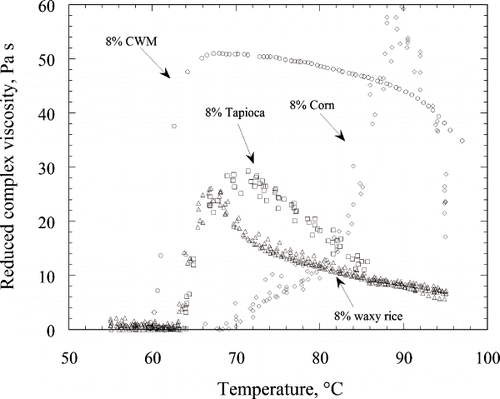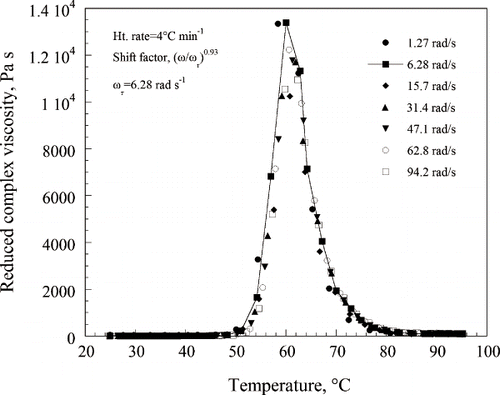Figures & data
Figure 1 Schematic diagram of a vane with six blades that can be used for measurement of yield stress and flow behavior of food dispersions.
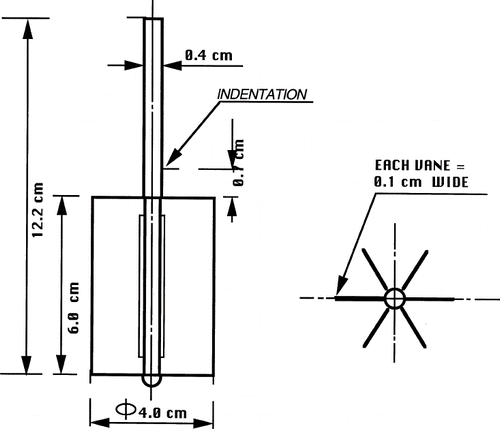
Figure 2 Torque vs. time curve when a vane is rotated at a low rpm. Yield stress can be calculated from the maximum value of the torque.
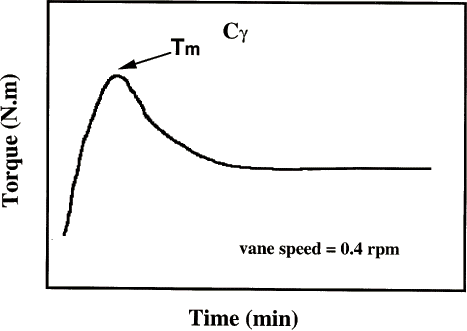
Figure 3 Complex viscosity vs. temperature curves obtained at different oscillatory frequencies on an 8% cross-linked waxy maize starch dispersion.
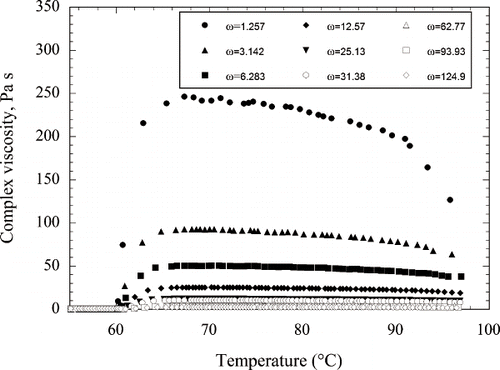
Figure 4 Master curves of reduced complex viscosity vs. temperature of the 8% starch dispersions: corn, cross-linked waxy maize, tapioca, and waxy rice. The reference shear rate is 6.28 rad s−1.
